How to edit BigCommerce products in bulk?
Regularly updating your product information is critical for all organizations, as it may update on product availability, make improvements, add extra data, and more. The bulk product edit was created to modify a number of your product details. It covers the majority of exportable fields and contains columns with special names that enable you to skip stages during the import process.
This article will give you a detailed A-to-Z instruction of How to edit BigCommerce products in bulk with two possible techniques, through the BigCommerce Control Panel, and through CSV file as well as the possible problems during the process.
Product details can be edited in bulk
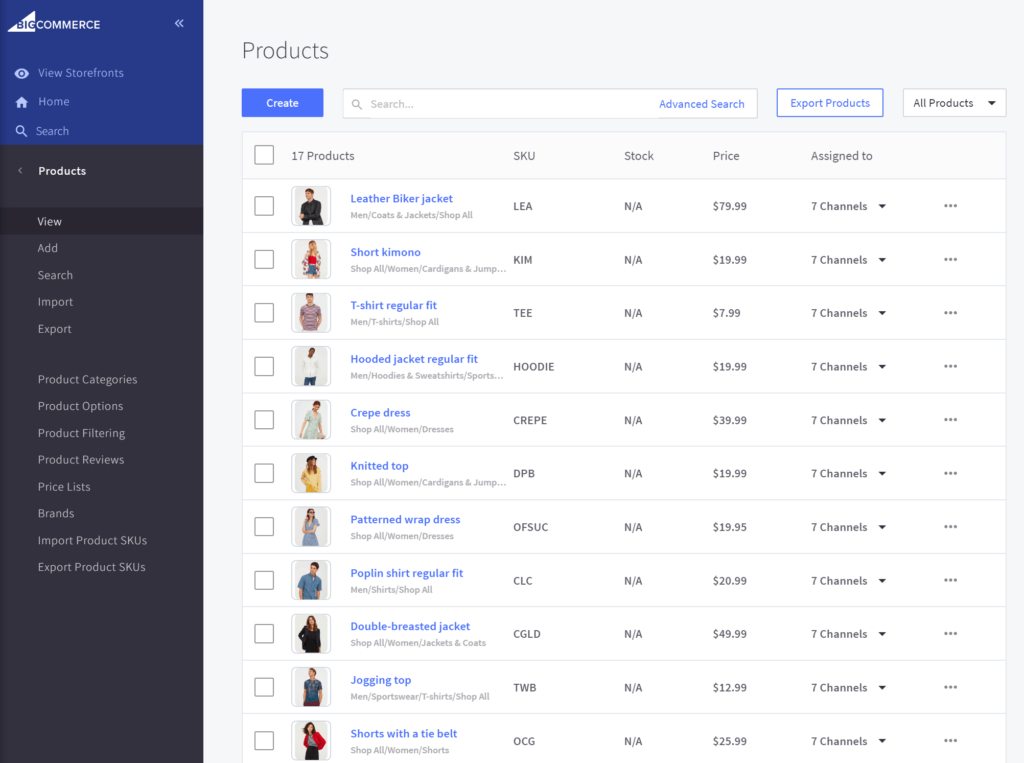
With using BigCommerce Control Panel, these aspects of products that can be edited in bulk are:
- Product Name
- Sale Price
- Default Price
- Brand
- Categories
- SKU
- UPC/EAN
- Track Inventory
- Stock Level
- Visible
- Featured
- Free Shipping
How to edit BigCommerce products in bulk with the Control Panel?
Step 1: Navigate to Products, choose View.

Step 2: Choose Bulk Edit.
- Choose the product you want to edit. Click on Bulk Edit in the drop down menu, select Confirm.

- The products are organized in rows, while the characteristics of them are organized in columns.
Step 3: For products with variations, expand its variants.
- To expand the product variants, click on the (+) symbol. Click on a cell to edit.
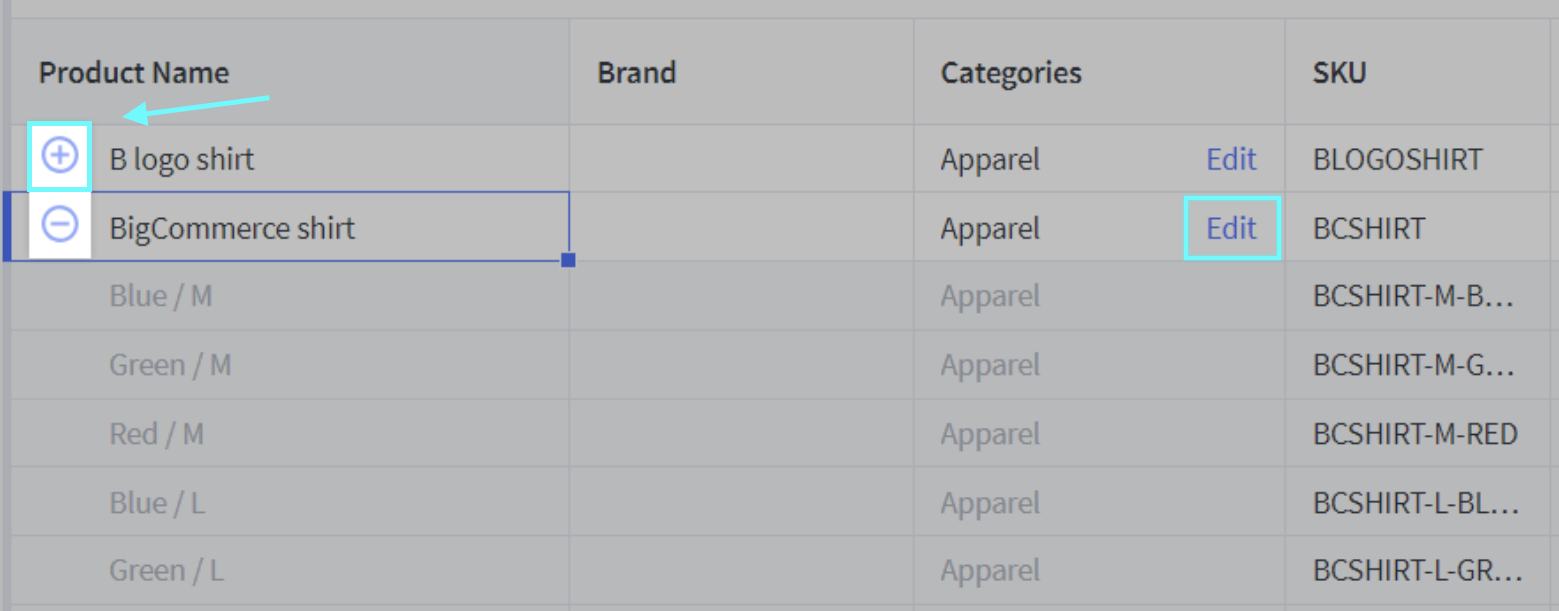
-
To restore to your previous saved settings and undo any pending modifications, click on Discard.
-
Click Save to save and commit your pending changes.
Note:
- For variation details that are modifiable but not specified (such as price and stock), those cells will display grayed out.
- If no price is specified, the variation pricing will inherit the base product’s price, and stock will default to 0.
- Due to the fact that certain variation details (such as category and brand) are not modifiable at the variation level, they are also grayed out.
How to edit BigCommerce products in bulk with CSV?
Step 1: Navigate to Products, choose Export.
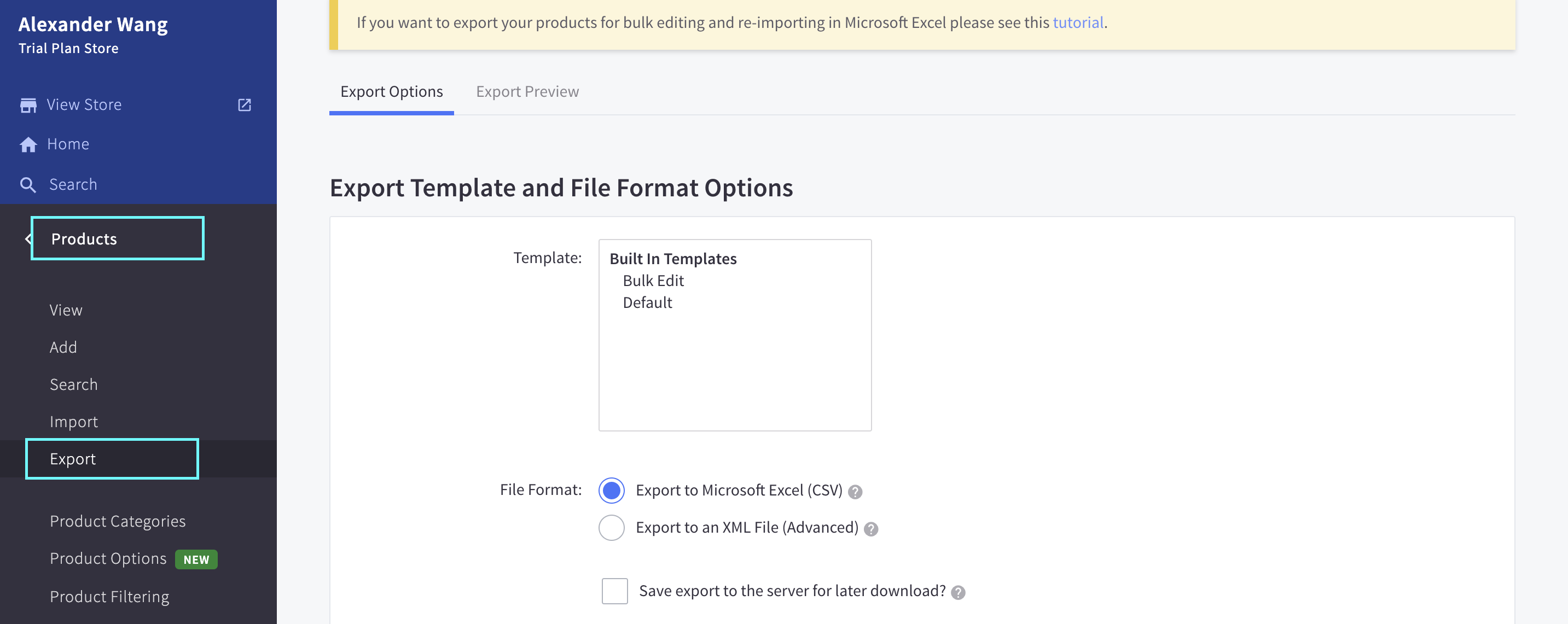
Step 2: Click on Bulk Edit.
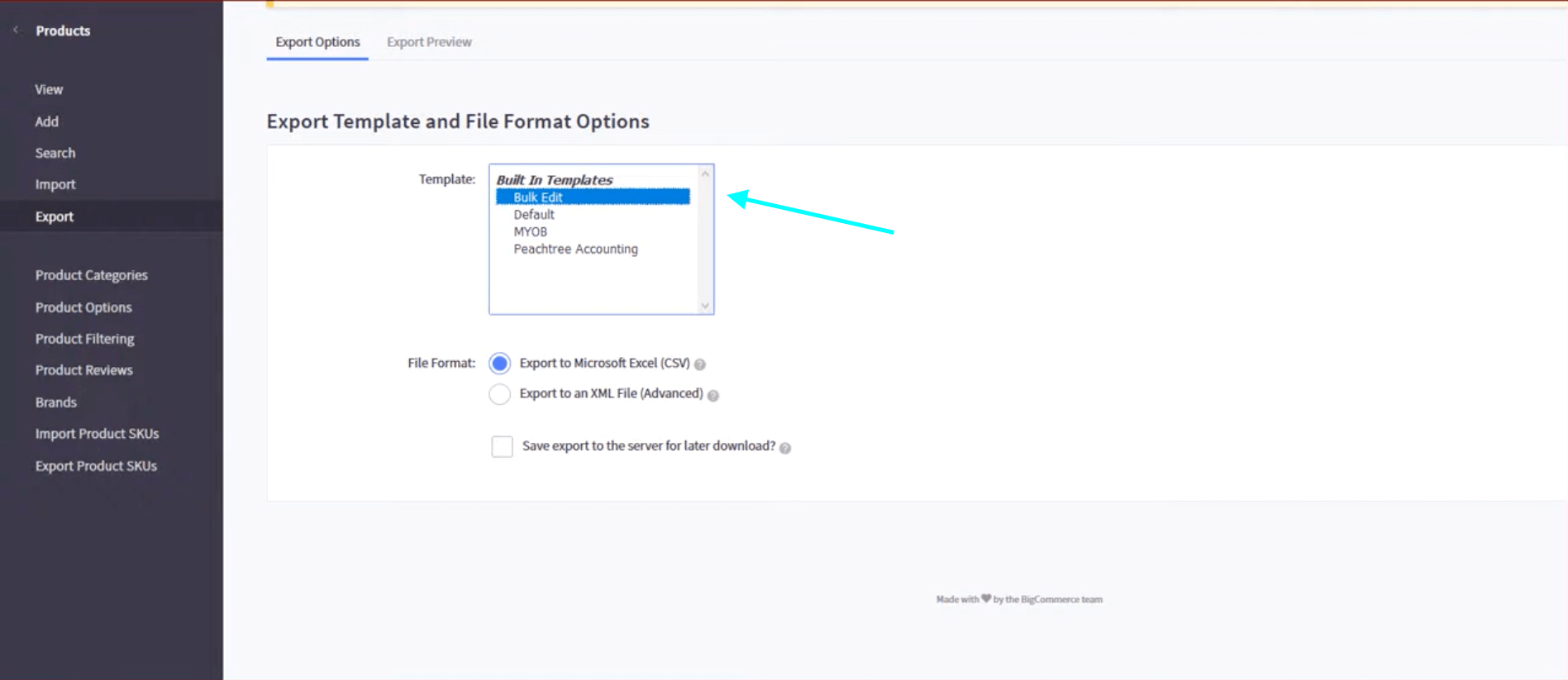
Note:
- Export to an XML file: You may export your file in either CSV or XML format. We recommend using CSV because all other file types will fail to import.
- Save to the server for later download?: Select this option to store the file to your WebDAV exports folder (recommended if you’re exporting more than 1000 goods).
Step 3: In the popup tab, click on Export my Products to a CSV file.
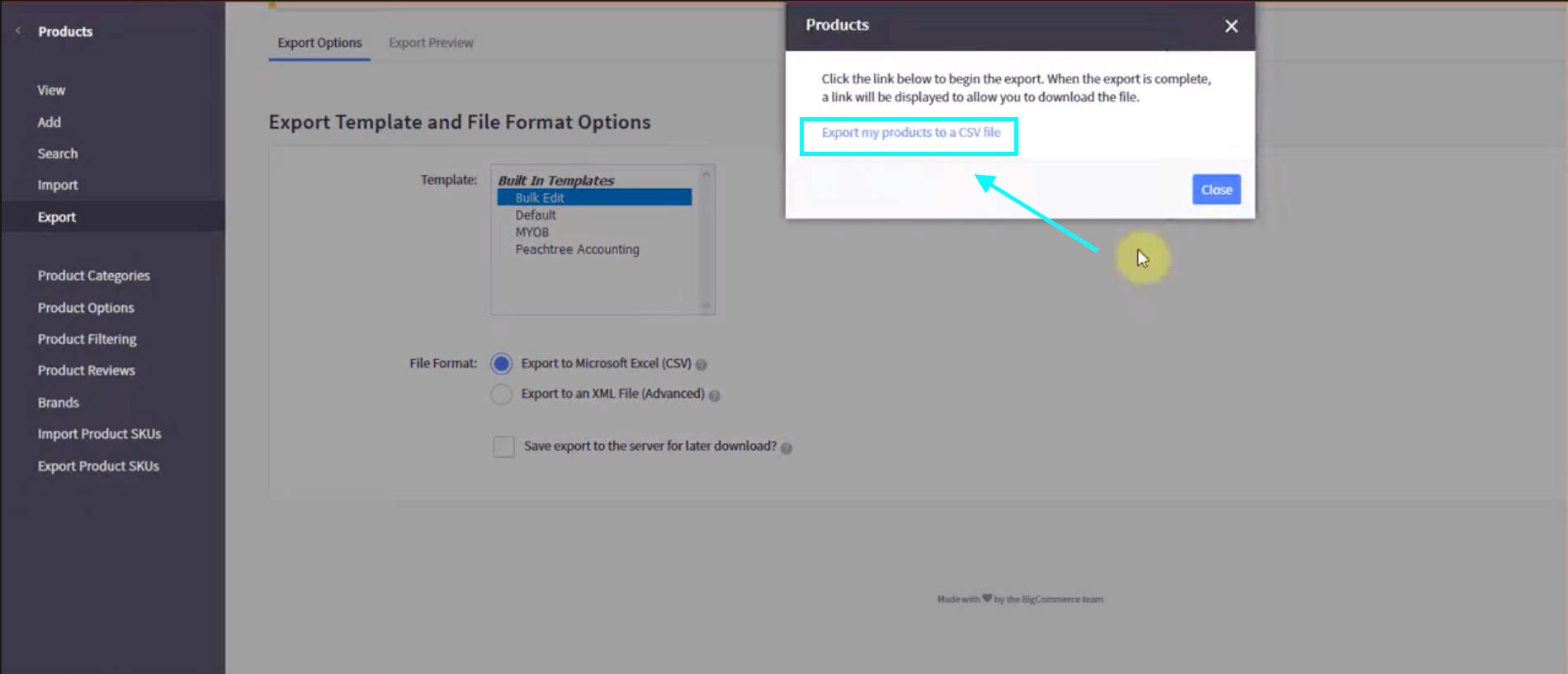
Step 4: When the exporting process is complete, choose Download my Products file.

Step 5: Edit the Excel spreadsheet as you want.
- After exporting the CSV, you may customize the spreadsheet by adding categories, adding options, altering product photos, or adding other data.
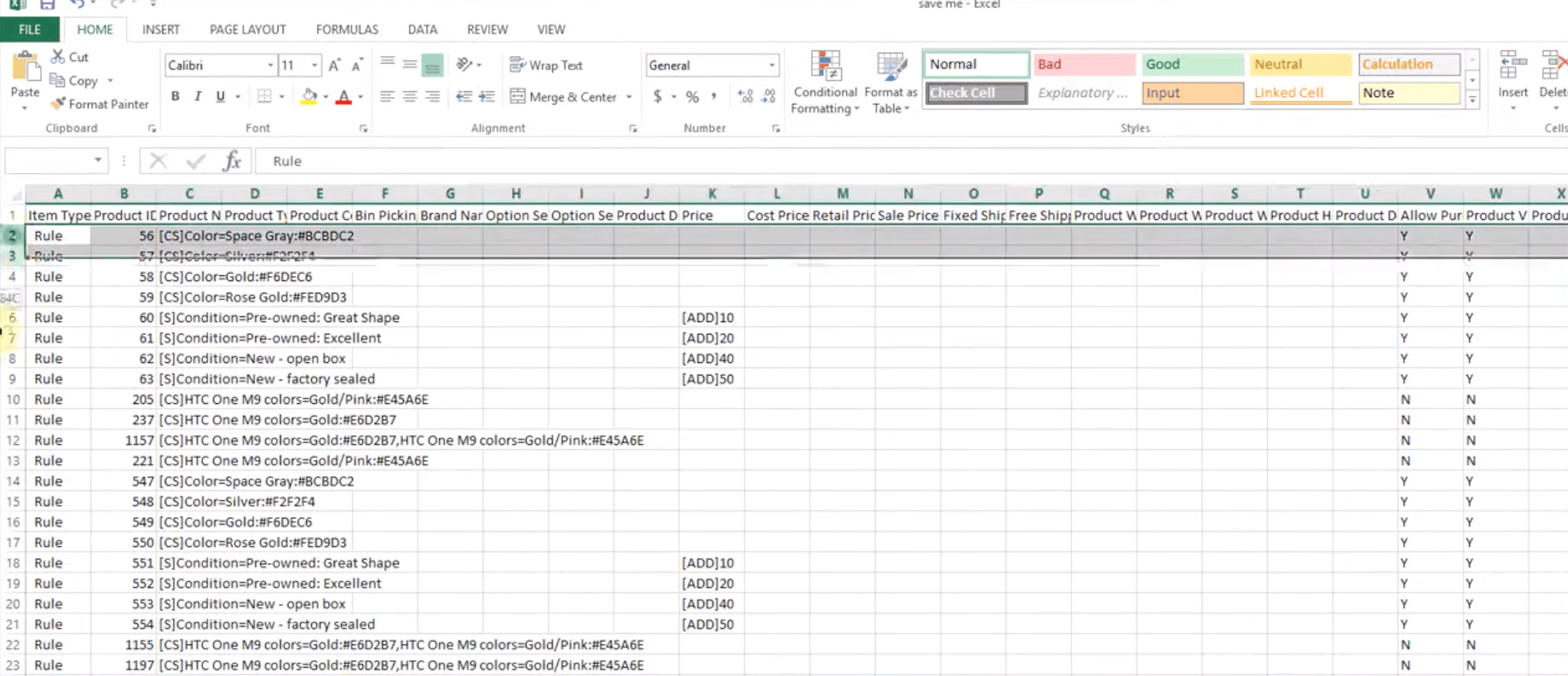
Note: Make a copy! After the export of your items, it’s a good idea to create a backup copy of the original export. This manner, if an import fails, you may rapidly return your items to their original condition.
Step 6: Navigate to Products, select Import.

Step 7: Insert your CSV file from your computer.
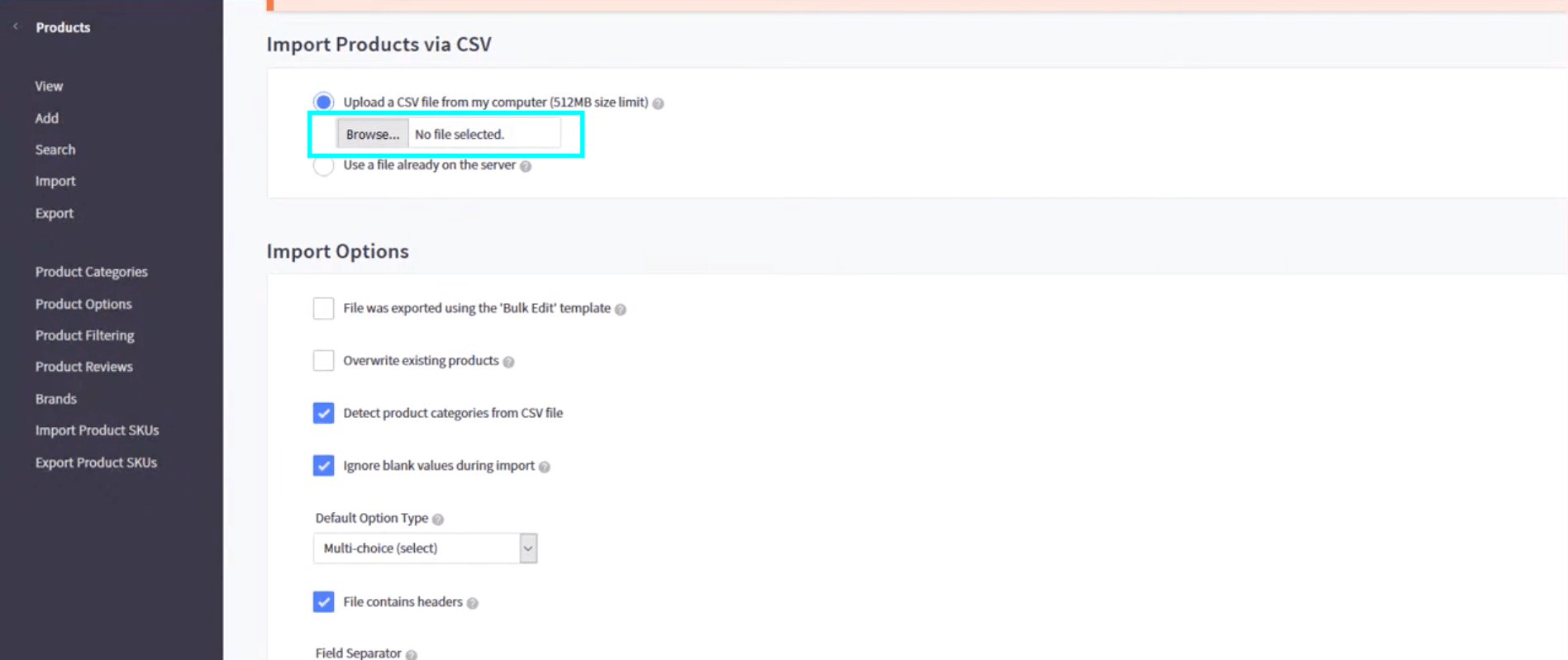
Step 8: Fill in the settings in the Import Options table. Click on Next when you finish.
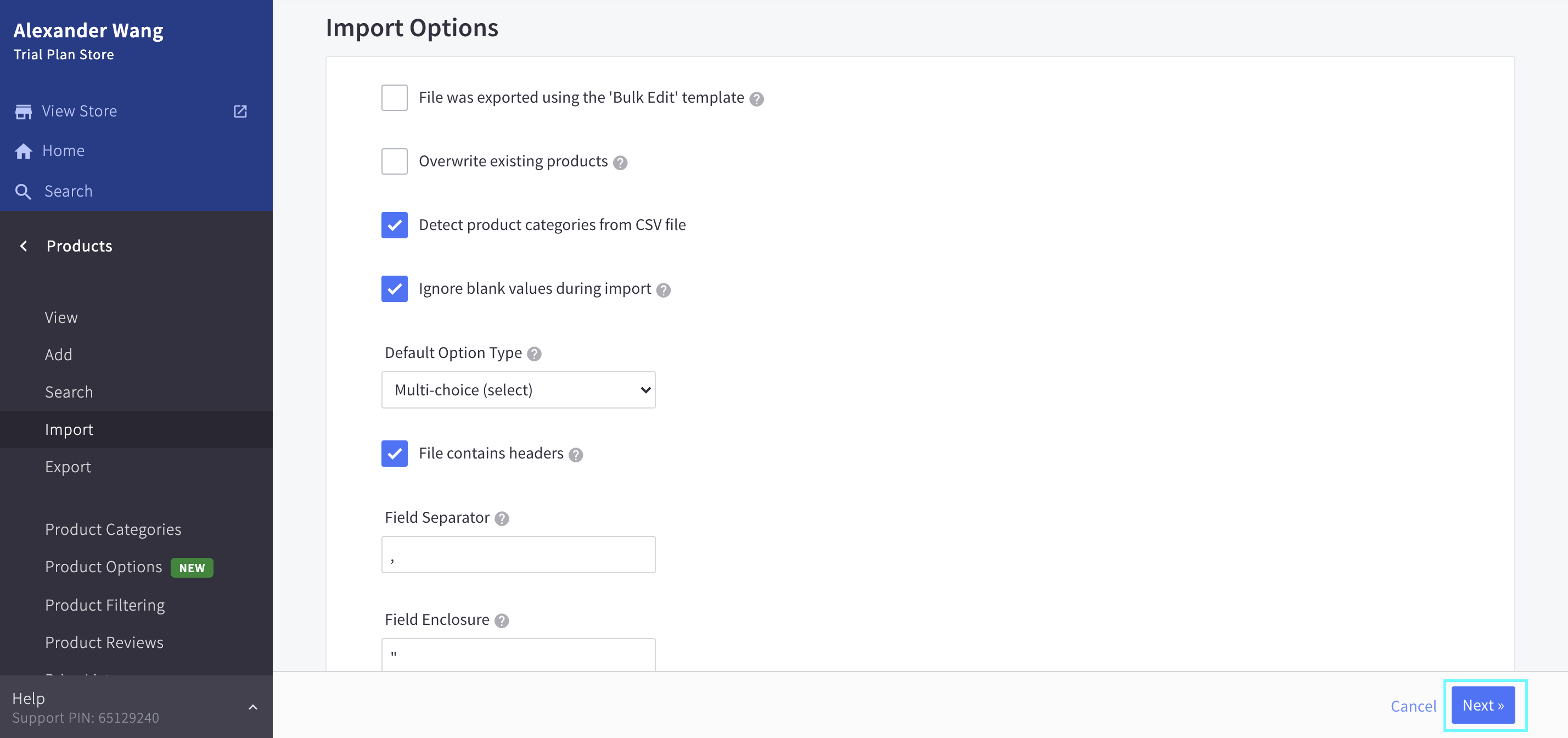
Note:
-
File was exported using the ‘Bulk Edit’ template: Select this option if you exported your file using the Bulk Edit template, or BigCommerce sample CSV, or if the column names in your exported file match those given in the table of supported fields below.
-
Overwrite existing products: If ticked, your imported items will be updated. Given that this is the primary reason for importing your items, this should be selected.
-
Delete existing images and Delete existing downloads: These will remove all of your product photos and digital product files from your computer. Once they are deleted from BigCommerce, there is no way to recover them. Enabling this option is not recommended in the majority of import scenarios.
-
Detect product categories from CSV file: This option should be enabled if you want the import to auto-detect category names.
-
Ignore blank values during import: By unchecking this option, the data associated with any blank field in your import file will be deleted. As a result, we highly advise you to leave this setting enabled.
-
Default Option Type:This is used if you are attempting to generate options through import and have not correctly defined the option type in the file. It allows you to define a single option type, although we recommend supplying the option type in your CSV file.
Step 9: Ensure all of the data has been matched to the BigCommerce settings. Select “Next” when finished.
- If you choose Bulk Edit Re-import, this step is skippable.
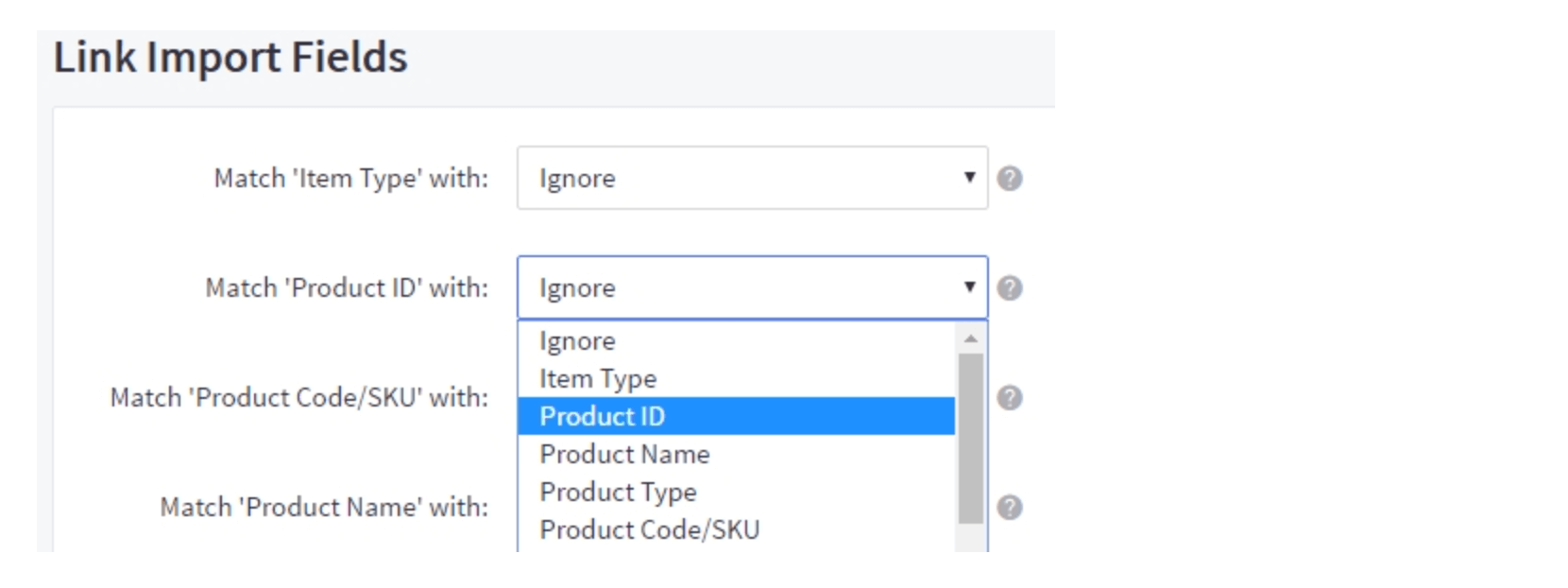
Note:
- Ignore indicates the data hasn’t been matched. It is applied using the Ignore blank values during import setting. If you clear this checkbox, all your imported data associated with any blank field will be deleted. To get the best possible results, we recommend leaving the settings on.
Step 10: Click Start Import to begin the importing process of your products.
- When the import is done, an import summary tab will appear.
-

- To see any warnings during the import, select More information.

Problems possibly occur with editing products in bulk
1. Easily to mess up the whole product list
Unfortunately, one of the biggest problems of editing products in bulk with CSV is that it’s very easy to screw up the whole process, your product lists, and your site. The reason is that there is no preview after you edit your file and import it to your BigCommerce store. As a result, you have to be extremely careful, and follow closely the instructions while using this technique to protect your site.
2. Default Price Strikethrough does not show when the variant option has a sale price
In some cases, you will find that the Default Price Strikethrough does not show the sale prices of some variant options of the products after editing via Bulk Edit. Strikethrough only appears when the default and sale prices of all options are the same, not when only some of them are on sale. If you have come across this problem, please contact BigCommerce support staff for detailed fixing instruction for your own store.
3. System does not automatically put products with no stock as Pre-Order
There is also a possibility that you can not automatically indicate products with 0 stock level as a Pre-Order product. To solve this inconvenience, you should install the Backorder app in the Marketplace. This is the only app that can help you overcome this difficulty.
4. Bulk export pulls strings of code into random rows/columns
Another issue with editing products in bulk is that sometimes when you export your CSV inventory file using the export products techniques, some rows in the Excel spreadsheet are populated with very long strings of what seems to be source code. Again, please contact the BigCommerce support team for further assistance if this problem happens to your process.
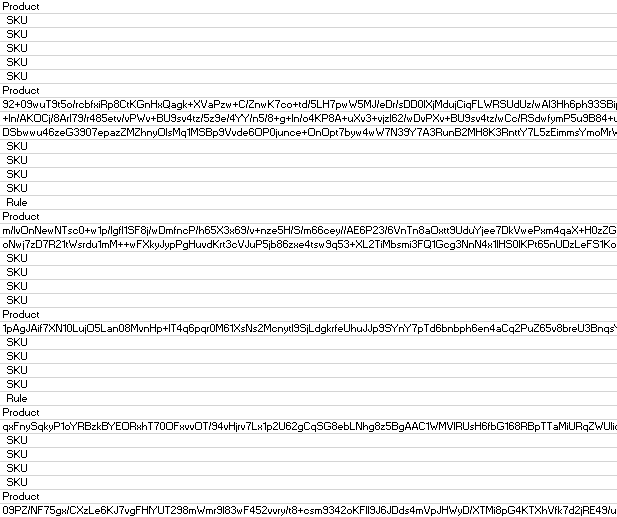
Final thoughts
After reading through this time article, we hope that you now understand How to edit BigCommerce products in bulk. Our work can assist you well in streamlining the bulk editing process of your own BigCommerce store.
Do you find this instruction helpful? If yes, please make sure to support our work by sharing it with your friends and colleagues.





